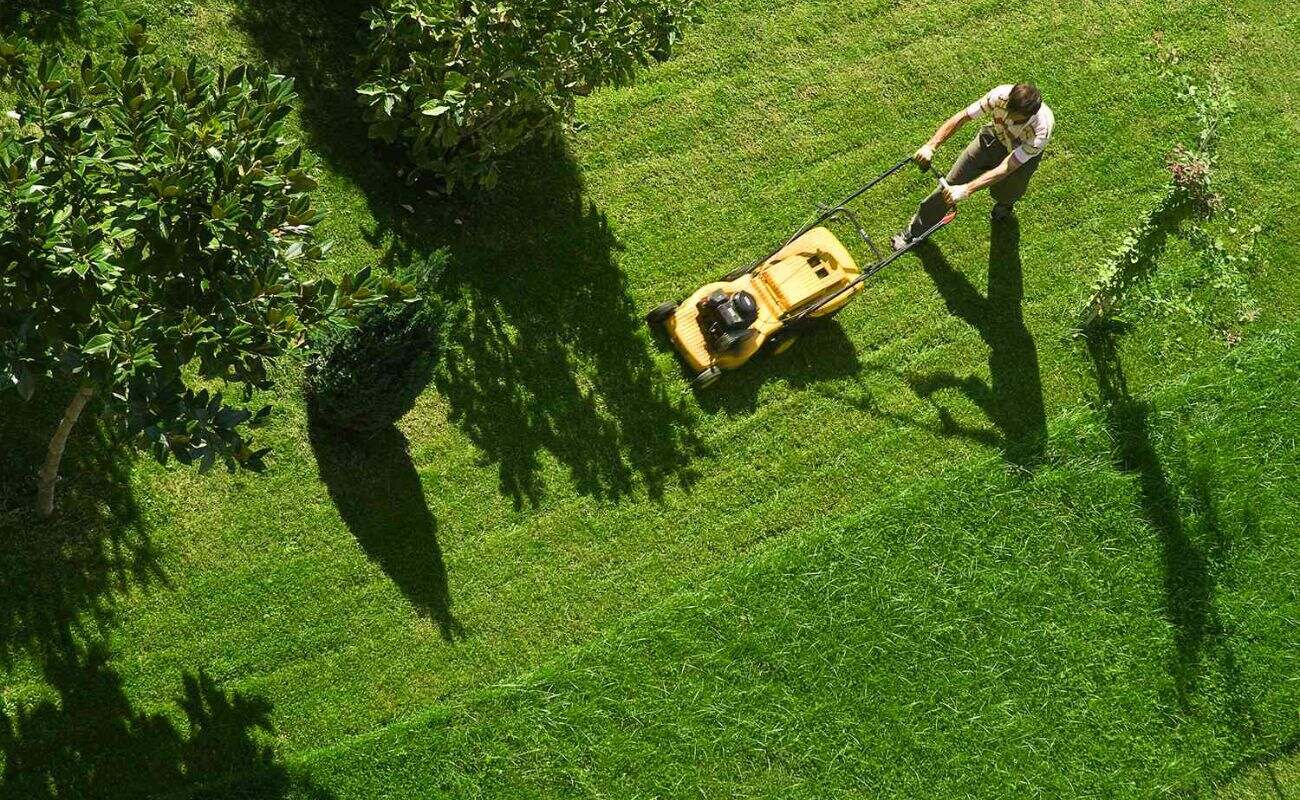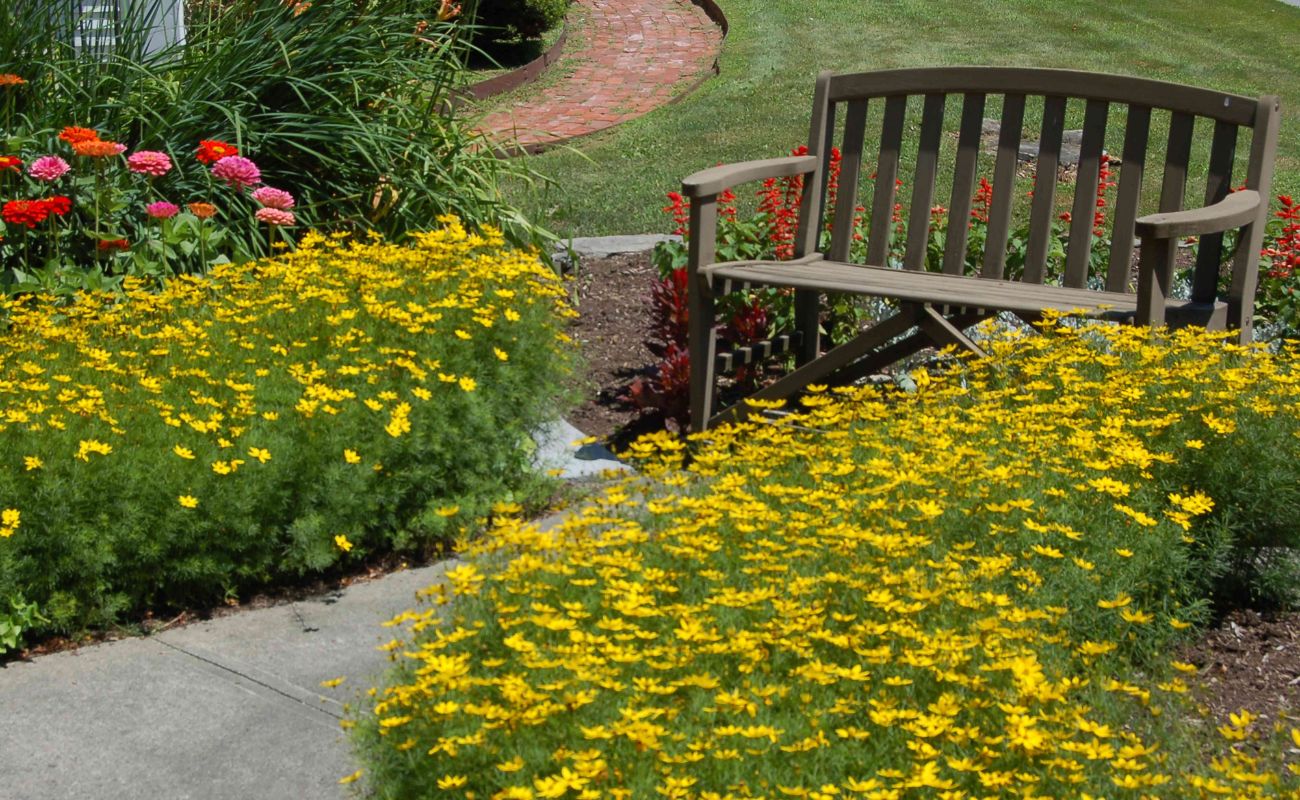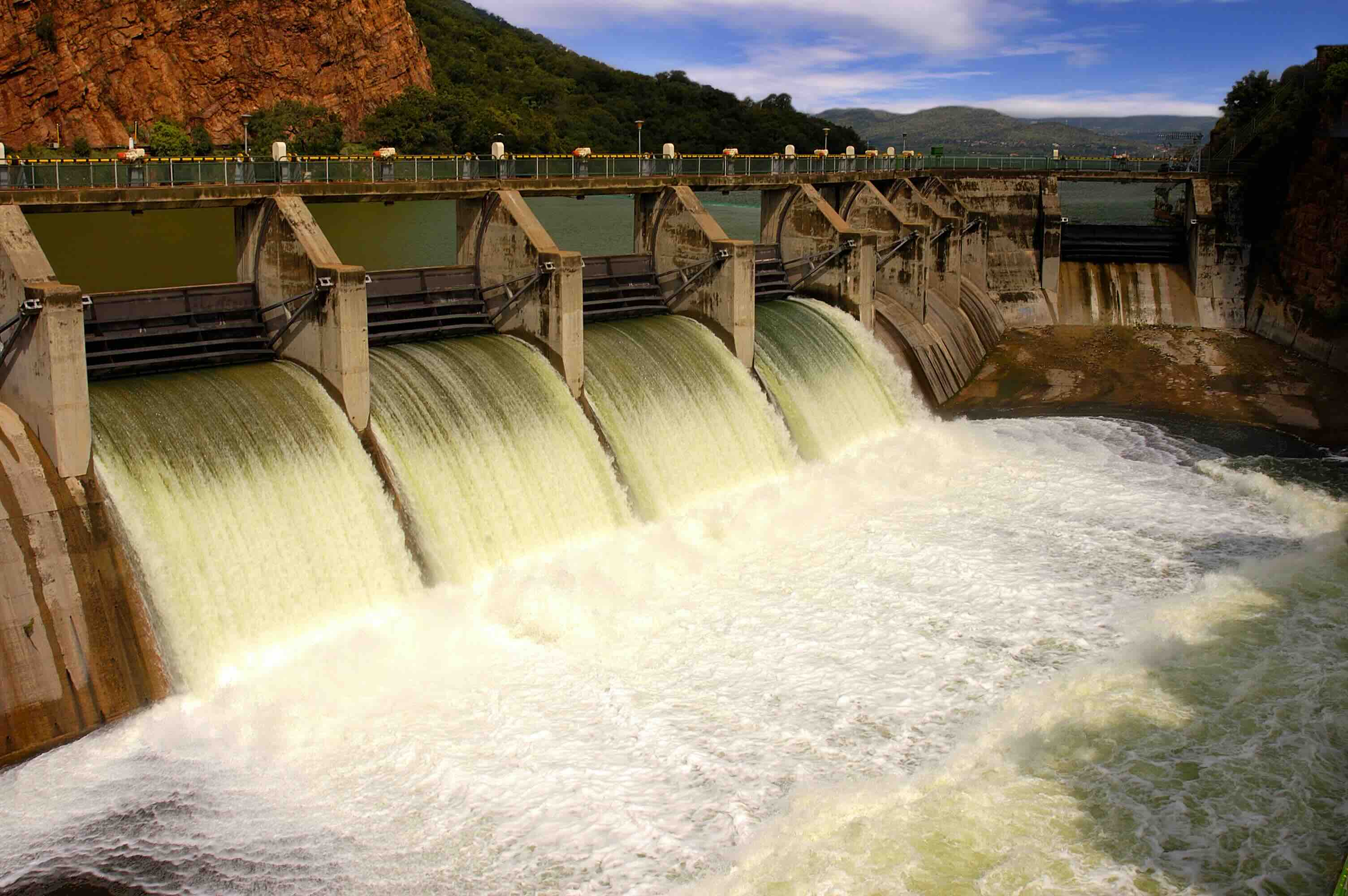Home>Garden Essentials>Why Would A Tenant Want To Have Landscaping Included In The Lease Agreement


Garden Essentials
Why Would A Tenant Want To Have Landscaping Included In The Lease Agreement
Modified: March 7, 2024
Discover the benefits of including landscaping in your lease agreement. Find out why tenants love having a garden as part of their rental experience.
(Many of the links in this article redirect to a specific reviewed product. Your purchase of these products through affiliate links helps to generate commission for Storables.com, at no extra cost. Learn more)
Introduction
Welcome to the world of gardening and outdoor spaces! In this article, we will explore the reasons why tenants would benefit from including landscaping services in their lease agreements. Renting a property with landscaping included can add immense value and enhance the overall experience for tenants. From improved curb appeal to reduced maintenance responsibilities, there are numerous advantages to having landscaping services incorporated into the lease agreement.
Landscaping is not just about pretty flowers and neatly trimmed lawns; it encompasses a wide range of services that contribute to the overall aesthetics, functionality, and sustainability of outdoor spaces. Whether it’s a private garden, a communal courtyard, or a rooftop terrace, a well-maintained and thoughtfully designed landscape can greatly enhance the enjoyment and quality of life for tenants.
So, why should a tenant consider including landscaping in their lease agreement? Let’s delve into the benefits that await those fortunate enough to have this arrangement.
Key Takeaways:
- Including landscaping in a lease agreement benefits tenants by boosting curb appeal, reducing maintenance responsibilities, and enhancing overall happiness and well-being.
- Landlords and tenants should negotiate and draft a clear landscaping clause, addressing services, cost allocation, maintenance responsibilities, and seeking legal guidance for a successful arrangement.
Benefits of Including Landscaping in the Lease Agreement
When it comes to renting a property, first impressions matter. One of the key benefits of including landscaping in the lease agreement is the significant boost it provides to the curb appeal of the property. A well-maintained landscape with lush greenery, colorful flowers, and strategically placed hardscape elements can create an inviting and welcoming environment that will attract potential tenants.
Not only does landscaping increase curb appeal, but it also contributes to enhanced tenant satisfaction. Imagine coming home to a beautifully landscaped property after a long day’s work. The sight of vibrant flowers, the fragrance of blooming plants, and the calming effect of a well-designed outdoor space can greatly improve tenants’ overall happiness and well-being. With landscaping included, tenants can enjoy the benefits of a well-maintained outdoor area without the hassle and expense of doing it themselves.
Another advantage of including landscaping in the lease agreement is the reduced maintenance responsibilities for tenants. Landscaping services typically cover tasks such as mowing the lawn, pruning trees and shrubs, weeding flower beds, and maintaining irrigation systems. By outsourcing these tasks to professional landscapers, tenants can focus on other aspects of their lives without worrying about the time and effort required to maintain a beautiful landscape.
In addition to the immediate benefits for tenants, including landscaping in the lease agreement can also contribute to the long-term value of the property. A well-designed and well-maintained landscape adds to the overall appeal of the property and can attract higher-quality tenants. It also plays a role in increasing the property’s resale value, as a visually appealing landscape can be a major selling point for potential buyers. By investing in landscaping, landlords can ensure that their properties remain competitive in the market and maintain their value over time.
By incorporating landscaping services into the lease agreement, landlords can create a win-win situation for both themselves and their tenants. Tenants get to enjoy the benefits of a professionally maintained landscape, while landlords can attract and retain quality tenants, enhance the property’s aesthetics, and contribute to its long-term value. It’s a small investment in landscaping that can yield significant returns for all parties involved.
Factors to Consider When Including Landscaping in the Lease Agreement
While including landscaping services in the lease agreement offers numerous benefits, there are several factors that both tenants and landlords should consider to ensure a smooth arrangement. Let’s explore these factors:
Type and Scope of Landscaping Services: Before including landscaping in the lease agreement, it’s important to determine the specific services that will be provided. This may include tasks such as lawn mowing, planting and pruning, irrigation maintenance, and general landscape upkeep. Clearly defining the scope of services ensures that both parties have a clear understanding of what is expected.
Cost Allocation and Rent Adjustment: The cost of landscaping services needs to be allocated and agreed upon by both the landlord and tenant. This can be done in various ways, such as including the cost in the monthly rent, adding a separate fee for landscaping, or allocating expenses based on the size of the rented area. It’s essential to discuss and reach a mutual agreement on how the cost will be divided and incorporated into the lease terms.
Maintenance Responsibilities and Communication: It’s important to establish clear responsibilities for ongoing maintenance and communication between the landlord, tenant, and landscaping company. Determine who will be responsible for reporting any issues or requesting additional services. Establishing open lines of communication ensures that maintenance needs are addressed promptly and that both parties are aware of their roles and responsibilities.
By considering these factors, landlords and tenants can establish a well-defined arrangement for landscaping services that meets both parties’ needs and expectations. Taking the time to discuss and clarify these details upfront helps prevent misunderstandings and ensures a smooth and satisfactory experience for all involved.
A well-maintained landscape can enhance the property’s curb appeal, provide a pleasant outdoor space, and save the tenant time and money on maintenance.
Potential Challenges and Solutions in Including Landscaping in the Lease Agreement
While including landscaping services in the lease agreement can bring numerous benefits, there are some potential challenges that landlords and tenants may face. Let’s explore these challenges and discuss possible solutions:
Differences in Tenant Preferences: One challenge that may arise is differences in tenant preferences when it comes to landscaping design and maintenance. Some tenants may prefer a more minimalistic approach, while others may have specific requests for certain plants or features. The key to addressing this challenge is open communication and collaboration between the landlord, tenant, and landscaping company. Regular discussions and feedback sessions can help align preferences and find a middle ground that satisfies everyone involved.
Limited Budget and Resources: Another challenge that may arise is having a limited budget or limited resources for landscaping. Not all properties may have the financial capacity to implement extensive landscaping services. In such cases, it’s important to prioritize essential maintenance tasks and focus on cost-effective measures. Creative solutions, such as incorporating drought-tolerant plants or utilizing mulch for water conservation, can help maximize the impact of landscaping within budget constraints.
Communication and Coordination with Landscaping Company: Proper communication and coordination with the landscaping company can be another potential challenge. It is essential to establish clear channels of communication, and ensure that there is a designated point of contact between the landscaping company, the landlord, and the tenant. Regular meetings and check-ins can help address any maintenance issues, provide feedback, and ensure that the landscaping company is meeting the agreed-upon expectations.
By acknowledging and addressing these challenges, landlords and tenants can find solutions that work for both parties. Open communication, flexibility, and a willingness to collaborate are key to overcoming these obstacles and ensuring a successful and harmonious landscaping arrangement within the lease agreement.
Negotiating and Drafting the Landscaping Clause in the Lease Agreement
When including landscaping services in the lease agreement, it is essential to negotiate and draft a clear and comprehensive landscaping clause. This clause will outline the terms and expectations regarding landscaping services. Here are some crucial aspects to consider when negotiating and drafting the landscaping clause:
Clearly defining landscaping services: The landscaping clause should clearly define the scope and specifics of the landscaping services to be provided. This includes tasks such as lawn maintenance, tree and shrub care, flower bed upkeep, irrigation system maintenance, and any other specific services agreed upon. Defining these services in detail prevents misunderstandings and ensures that both parties are on the same page.
Specifying details of cost allocation: The landscaping clause should include details related to the allocation of costs associated with landscaping services. This includes deciding whether the cost will be included in the monthly rent as a separate fee, or divided based on the size of the rented area. Clearly specifying these details avoids confusion and ensures that all parties understand their financial responsibilities.
Addressing maintenance responsibilities and communication: The landscaping clause should clearly outline the maintenance responsibilities of both the tenant and the landlord. It should specify who is responsible for reporting any issues or requesting additional landscaping services. A clause about communication channels and response times should also be included to ensure efficient communication between all parties involved.
Furthermore, it is recommended to include a provision that allows for periodic inspections of the landscaping by the landlord or their designated representative. This enables them to ensure that the landscaping services are being performed to satisfaction and that the property is being maintained according to the agreed-upon standards.
During the negotiation and drafting process, it is advisable to seek legal guidance to ensure that the landscaping clause aligns with local landlord-tenant laws and regulations. Legal professionals with experience in real estate and lease agreements can provide valuable insights and help create a fair and legally binding landscaping clause.
By clearly defining landscaping services, specifying cost allocation, addressing maintenance responsibilities, and seeking legal guidance, landlords and tenants can negotiate and draft a landscaping clause that provides clarity, fairness, and a solid foundation for a successful landscaping arrangement within the lease agreement.
Conclusion
Including landscaping services in the lease agreement offers numerous benefits for both landlords and tenants. From increased curb appeal to reduced maintenance responsibilities, landscaping enhances the overall experience of renting a property. Tenants can enjoy the beauty and serenity of a well-maintained outdoor space without the hassle of upkeep, while landlords can attract and retain higher-quality tenants and enhance the value of their properties over time.
When including landscaping in the lease agreement, it is essential to consider several factors. Clearly defining the type and scope of landscaping services, specifying details of cost allocation, and addressing maintenance responsibilities and communication are crucial for a successful arrangement.
While there may be potential challenges such as differences in tenant preferences, limited budgets, and communication with landscaping companies, these can be overcome with open communication, collaboration, and creative solutions. By taking these challenges into account and finding suitable solutions, landlords and tenants can create a landscaping arrangement that satisfies both parties.
When negotiating and drafting the landscaping clause, it is important to clearly define the landscaping services, specify details of cost allocation, and address maintenance responsibilities and communication. Seeking legal guidance during this process can help ensure that the clause aligns with local laws and regulations.
In conclusion, including landscaping services in the lease agreement is a beneficial arrangement for both landlords and tenants. It enhances the property’s aesthetic appeal, improves tenant satisfaction, reduces maintenance responsibilities, and increases the overall value of the property. By considering the factors discussed and negotiating a comprehensive landscaping clause, landlords and tenants can create a harmonious and rewarding landscaping arrangement that adds value to the rental experience.
Frequently Asked Questions about Why Would A Tenant Want To Have Landscaping Included In The Lease Agreement
Was this page helpful?
At Storables.com, we guarantee accurate and reliable information. Our content, validated by Expert Board Contributors, is crafted following stringent Editorial Policies. We're committed to providing you with well-researched, expert-backed insights for all your informational needs.















0 thoughts on “Why Would A Tenant Want To Have Landscaping Included In The Lease Agreement”